To learn a language, you need to learn the culture of the country.
I’ve certainly found that to be true with French and France. But when I decided to learn Italian, it all seemed rather intimidating. Unlike in France, Italian cuisine, dialects, traditions and attitudes toward punctuality vary enormously by geography. Which culture should I try to learn?
And there was the start-over factor. As readers of this blog know, I often brag about my fluent French. Now, even after several years of study, I am a linguistic bumbler, at best. Could I make myself understood in the language of Dante?
Charlie and I decided to explore those questions with a trip to Naples. It was the only major Italian city neither of us had visited, which gave it an air of mystery. And it embodied southern-Italian culture, with all the chaos, spontaneity, demonstrativeness and joy that that implied.
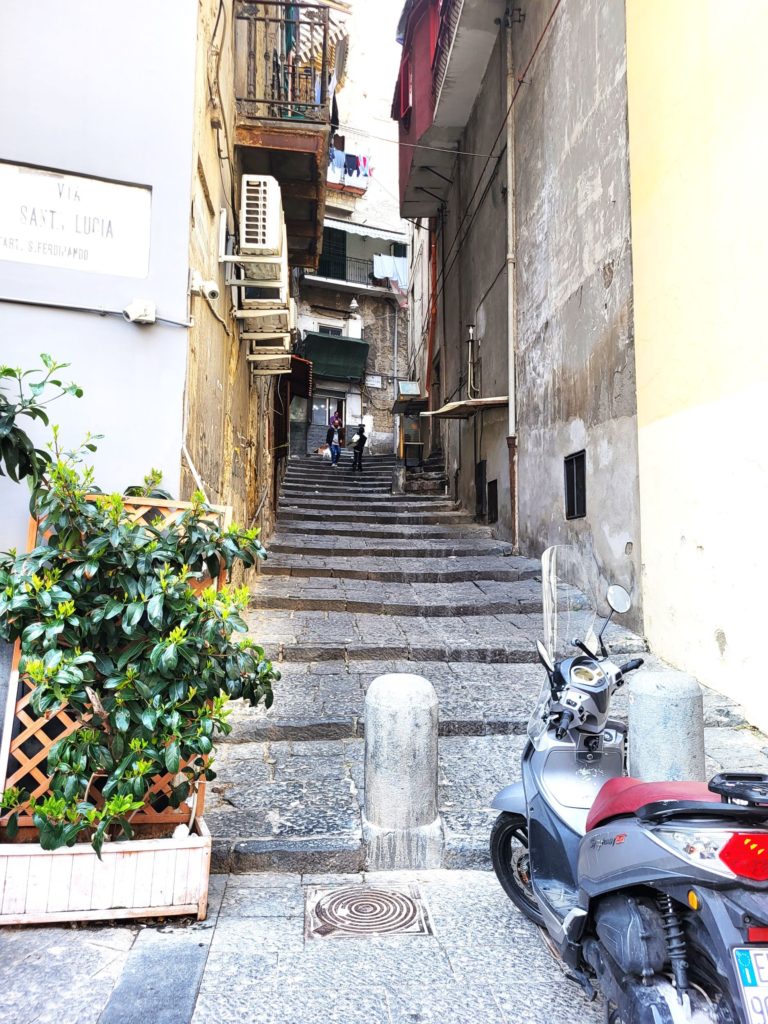
I had a mission, too: My online Italian teacher, Chiara—who is from Milan and has never been to Naples—assigned me the task of videoing myself speaking Italian on the trip.
This was scary. I had done the Duolingo online program, after which I had an idea of grammar and a small vocabulary but could not speak a single word, and then two-plus years with Chiara on an app called italki. I was nowhere near fluent, or even capable. But my lessons were fun, mostly because Chiara is a positive and encouraging teacher.
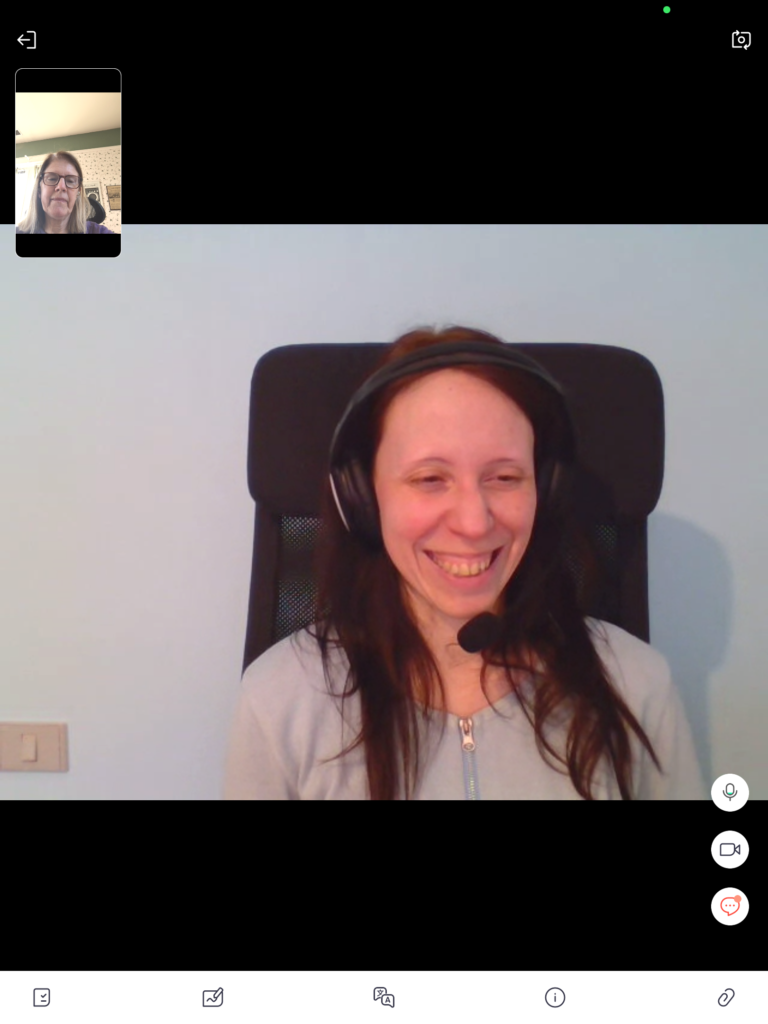
Photo with permission
I chose Chiara because she also taught Italian to native speakers of French. I have a theory that foreign languages are all stored in the same drawer in one’s brain. If I was going to learn Italian, it would have to live in the French drawer, and I needed to come at Italian from French.
This had worked pretty well. The genders and verb tenses largely parallel each other in both languages, with some exceptions: the words for flower and video, for instance, both are feminine in French and masculine in Italian. (Pause while native English speakers reflect on the idiocy of gender.) The subjunctive tense, another bane for anglophone students, is applied more often in Italian, including in cases where a positive wish is expressed.
And there were some fundamental differences: In French, if you are unsure about the ending of a conjugated verb you can just hope no one notices, since some endings aren’t pronounced. In Italian, pronoun subjects aren’t used and so are shown by verb tense. I can’t tell you how many times I have said “They are American” when I meant to say “We are American.” (“Sono americani, siamo americani”)
I have sometimes tried to fake Italian by giving French words an Italian pronunciation. When that fails during our conversations, Chiara corrects me in our chat. As you can see this happens a lot.
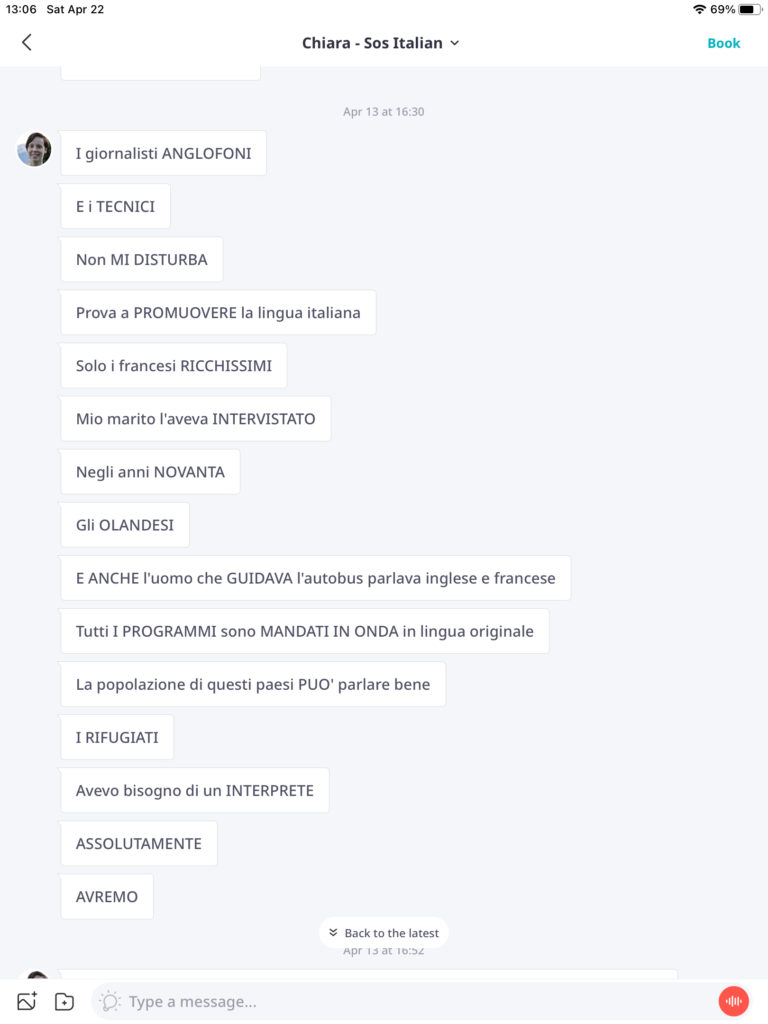
I told Chiara that sometimes I felt like I didn’t actually speak Italian but rather some code resembling Italian that only she could understand. She assured me this was not the case. But it was still an open question whether I was going to be able to communicate with the napolitani.
My test began as soon as we got into the taxi at the Naples airport.
“How much will the ride to the hotel cost?” I asked the driver, eyeballing the meter.
I must have said it correctly, because he took great offense at this attack on his professionalism. He eventually named a figure, but when I pointed out that the guidebook had a lower number, he was even more enraged.
“Signora, we are not in Africa! Taxi drivers here are honest!” He threw up his hands, which was a little frightening since we were on the highway, racing through the hills that define the city, slightly decaying apartment buildings on either side.
I managed to explain that we were just following good practice, that it wasn’t personal. He warmed up. By the end of our ride we had discussed how well the Naples soccer team was doing in the Italian league and how badly the Italian national team was doing in international matches. And the fare was less than he had said it would be. We shook hands on parting.
It was an omen for the trip. Naples was beautiful, charming, funky and very real, especially when it came to drying laundry.
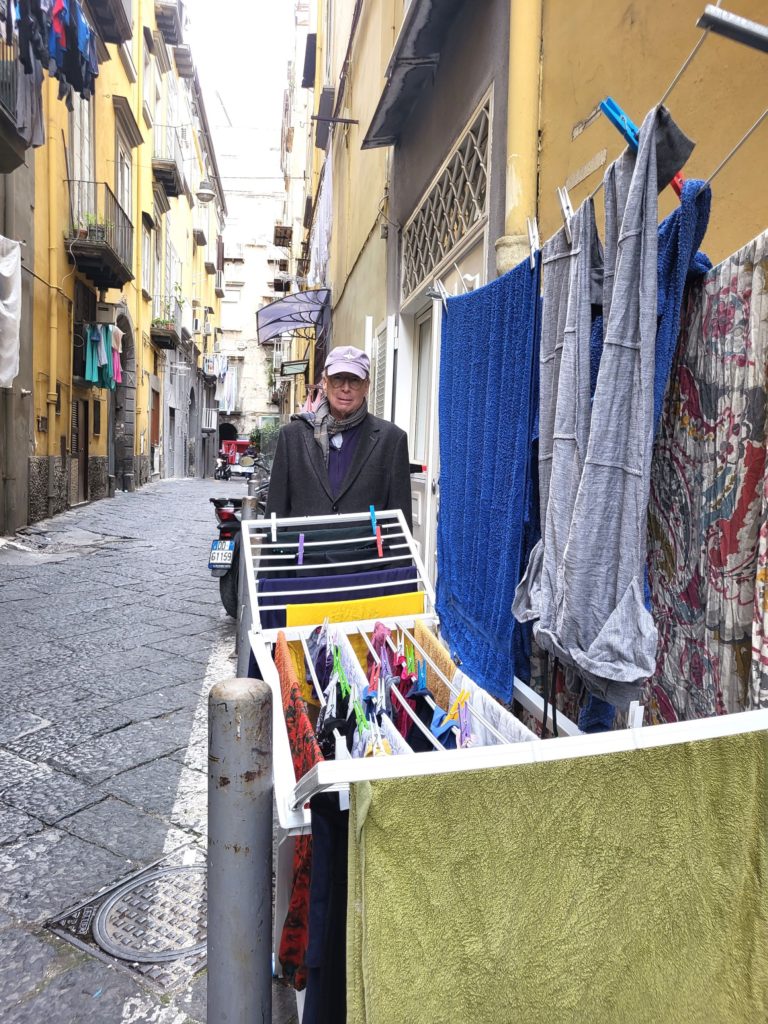
It has a heavy dose of southern-Italian contradiction.
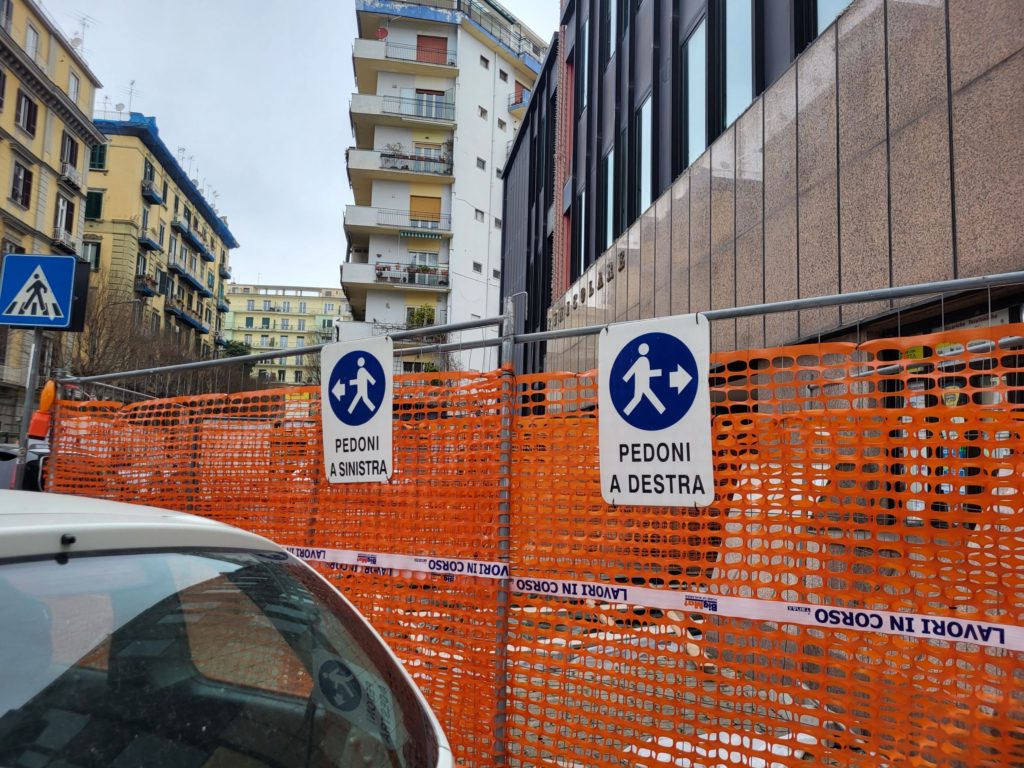
And beauty: The photo below is of the cloister of the Certosa (charterhouse) di San Martino, on a hill above the city. That is an art class, sketching in a magic silence. Would the grass in a comparable site in France be so ragged?
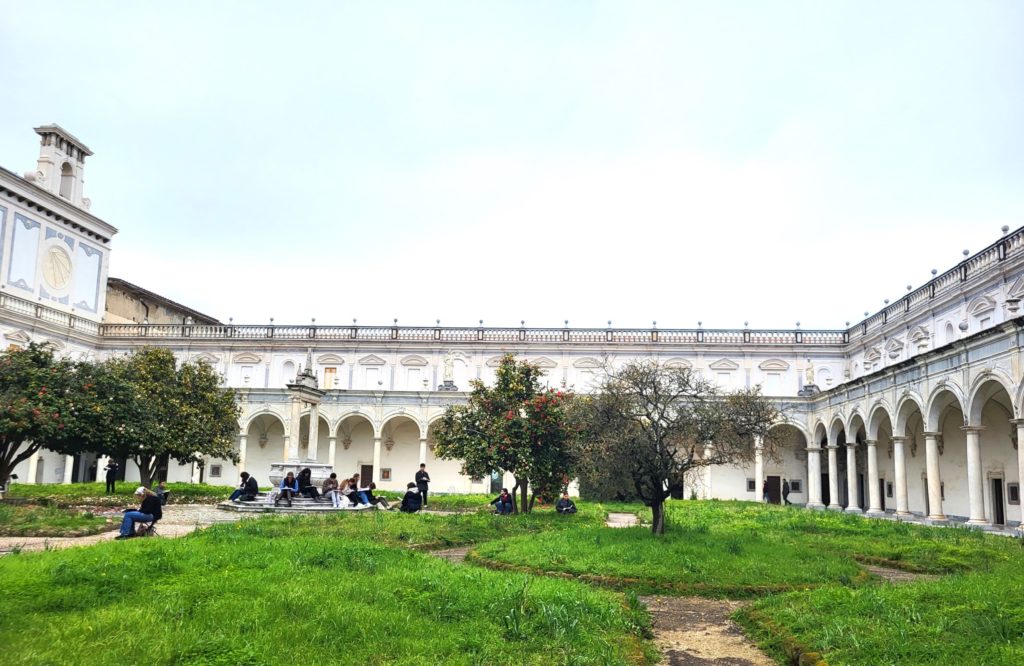
We spent a day in scenic Capri, an hour’s ferry ride away.
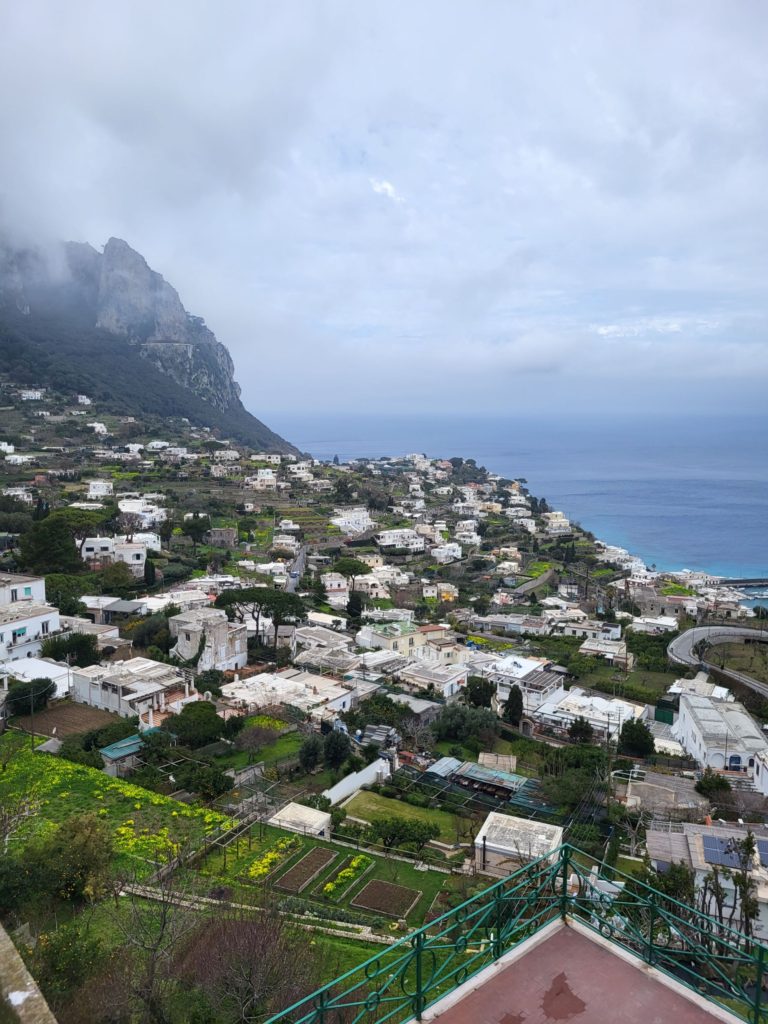
Leaving, we had a real southern-Italian cultural experience: Our return ferry was canceled. We managed to book the next one, two hours hence. It was a large car ferry rather than the hydrofoil we had taken over.

Instead of docking at the normal place, it backed itself up to the narrow quay along the seawall. The passageway was about six feet wide. On it were crowds trying to pass to get onto the next ferry down, crowds of people trying to get onto this ferry, crowds of people leaving the ferry – and cars leaving the ferry. There was no sign of anyone attempting to establish order.
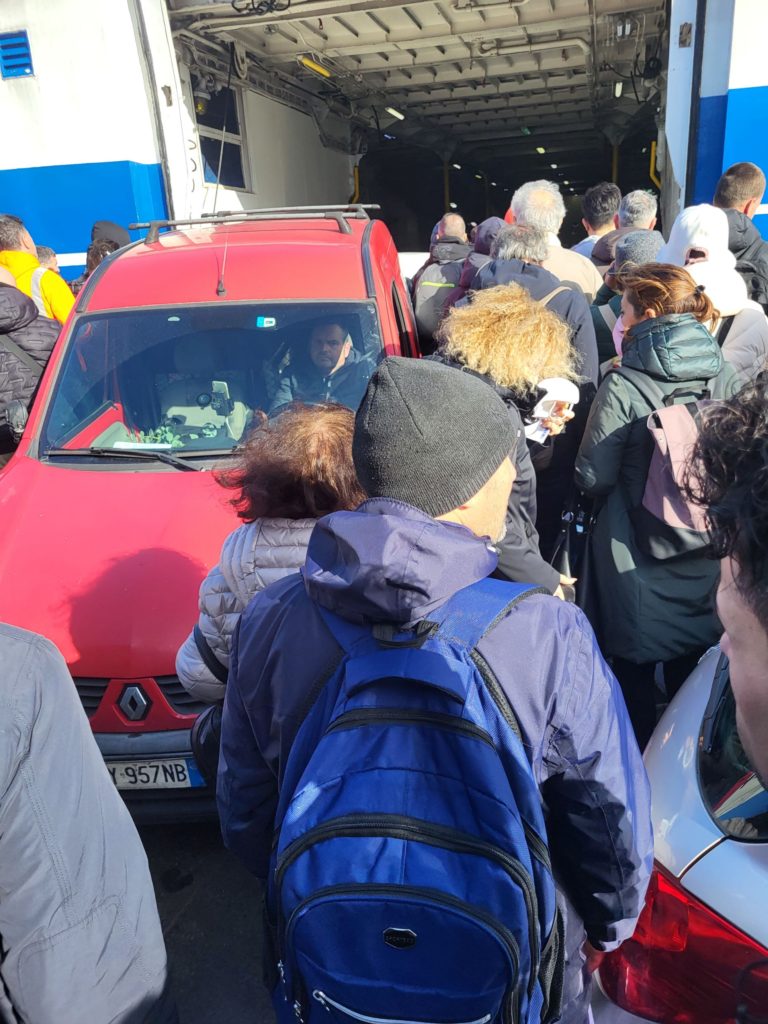
As far as I could tell, no one was run over or dumped into the harbor. And we made it back in time for our long-planned dinner reservation at a really fancy place on the beach, literally.
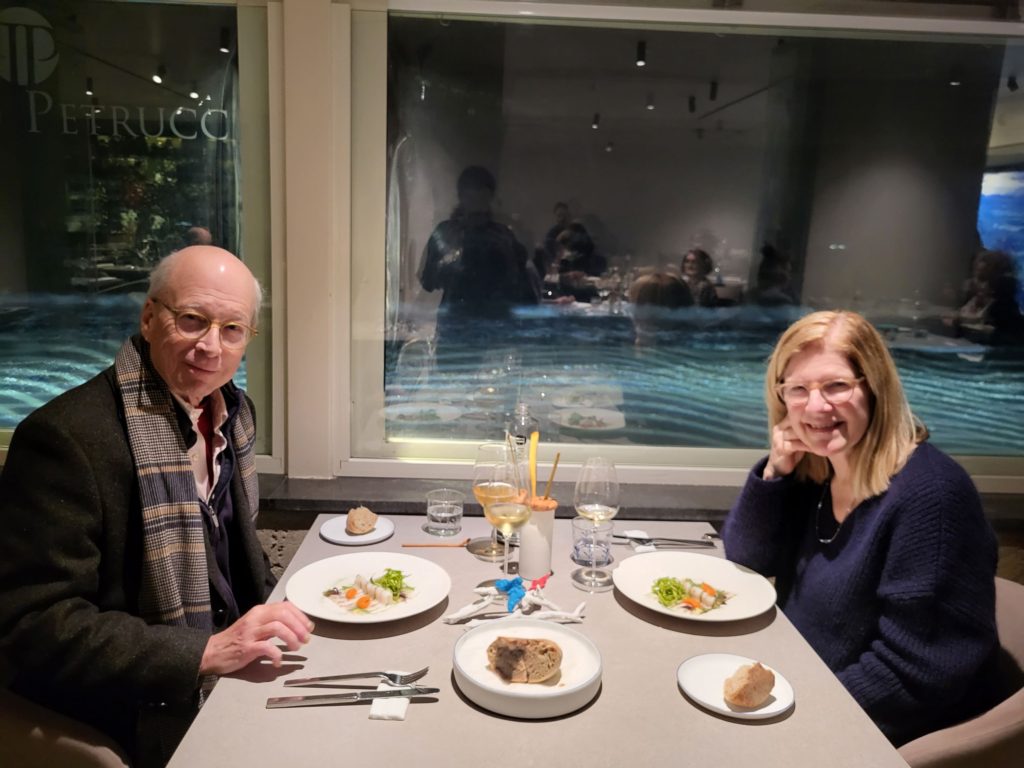
During our trip I made numerous videos for Chiara, including one of the Archaeological Museum, which houses many recovered objects from nearby Pompeii. It included so many errors of conjugation and grammar that it is not linked to here, but here’s one of the sounds of Naples.
Chiara said it made her laugh, and she spotted only one small mistake. And she said she was very proud of me for doing the videos: “Bravissima, bravissima, bravissima!”
Reading list: Given my interest in mystery fiction, it was only natural that I’d look for detective series set in Naples for the trip. I recommend two, both by Maurizio de Giovanni; both are available in English. They both describe vivid scenes of Naples, from the seaside to the historical center to several of the high peaks.
The Inspector Ricciardi series takes place in 1930s Naples under the shadow of fascism and features a detective with a very special ability that is a professional blessing and a personal curse.
The Bastards of Pizzofalcone series is in the modern era and its heroes are a group of misfit police officers thrown together by chance who must prove themselves with every case.
Both are on television in the U.S., the first on PBS and the second on MHz.
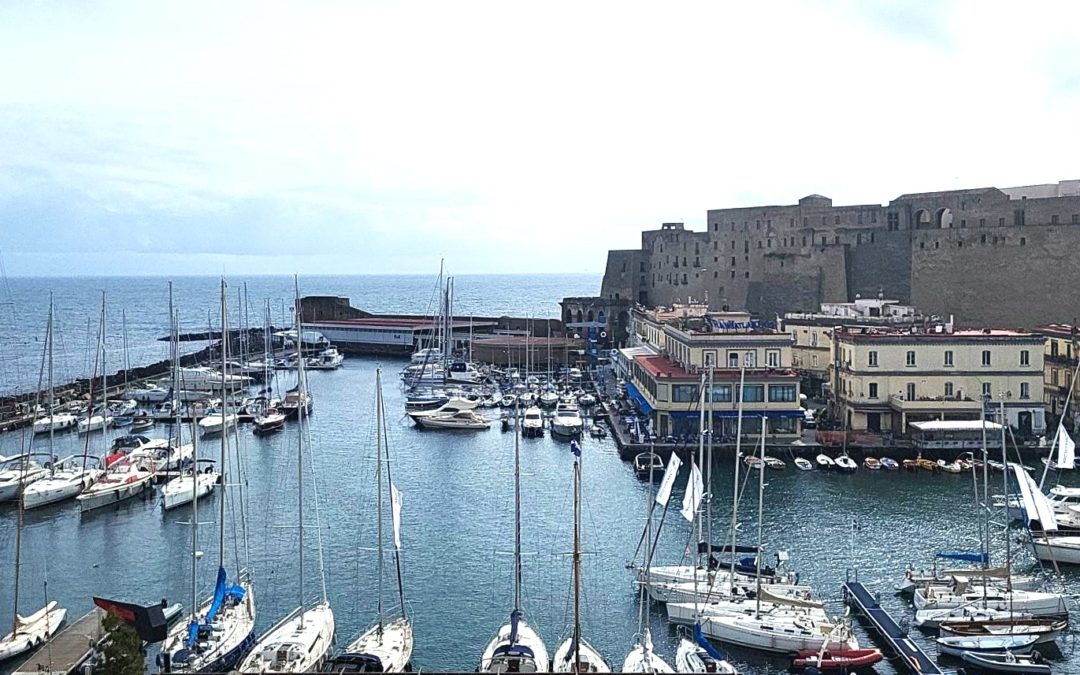
I loved this post Ann. And thanks for the Mauricio de Giovanni recommendations.
Enjoy, and thanks!
Wonderful blog! I lol-ed quite a bit, and very much appreciate the book recommendations also! For some reason this one came to my inbox, they haven’t been 🙁
I’m so glad you liked it!
DuoLingo…Hahahahaaaa. I sympathize. Studied Vietnamese for the last 3 yrs, and my working knowledge is 2mm deep and …3yrs long. I’m on an extended vacation from the Owl. In 1974 learned a brutal present tense Italian by total immersion and terror [what the hell am I going to say to my host family today??]. They were very patient w me. It came back in in fossil fragments this past trip to Italy.
See? It lives in that drawer somewhere.
Another interesting blog piece. Thank you, Anne. I’m touring Italy’s Ligurian Coast now. I’m enjoying listening to the conversations going on around me, and I’ve been doing the same pronounce the word with an Italian flair trick that you tried (in my case Spanish) with no more success, but it’s fun.
Thank you! It’s funny how one is taught the Romance languages are so similar. Compared to Mandarin, sure. But I know what you mean. When I’m in Spain I try a combination of French and Italian, almost entirely unsuccessfully.
K and I enjoyed your post; she is also interested in getting back to the Italian she learned as a little kid living near Pisa. Best wishes!
Many thanks!
Really lovely, and insightful (especially this: “If I was going to learn Italian, it would have to live in the French drawer, and I needed to come at Italian from French.”). “Drawer” is exactly right, or so I faintly recall from the time when I allegedly spoke both languages. I was so proud at the time — this dates to college years — that I bragged to a polymath professor, who mentioned that, yes, yes, it doesn’t become complicated until your languages number seven. Next, for you, should be Portuguese — easy!
Thanks so much, Robert! I’m sure your languages are in that drawer somewhere.